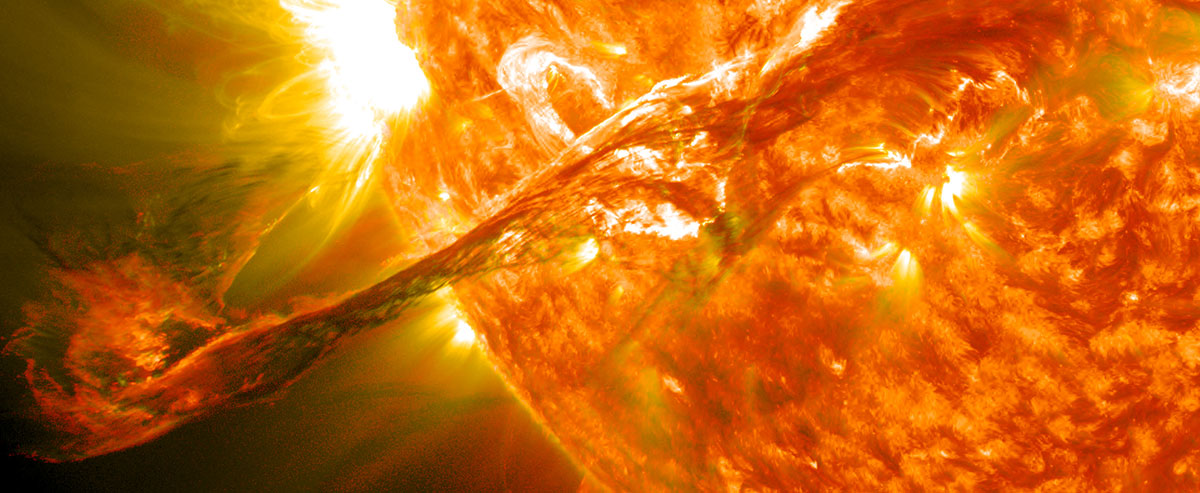Description
There are many different types of space weather that can result in what is referred to as a "solar event". These naturally occurring hazards are relatively new to the sphere of hazard mitigation planning, and include concerns raised by geomagnetic storms, coronal mass ejections (CME), solar radiation storms, and solar flares (radio blackouts) that are relevant to local hazard mitigation planning teams.
Location and Extent
Geomagnetic disturbances in the atmosphere occur all the time, but infrequently are they strong enough to be classified as a storm, and even more infrequently strong enough to cause problems. Geomagnetic storms and their resulting auroras are more common near the poles due to increased magnetism, but space weather events can occur locally all over the globe. Satellites can also easily be affected by the various forms of space weather, and while not local to the United States or the CVPDC, damaging effects on one or several of these would be widespread.
History
The largest measured CME event hit earth in 1859 causing massive magnetic fluctuations in the Earth’s magnetosphere and sent electrified gas and subatomic particles toward the earth with the energy of 10 billion atomic bombs. Known as the Carrington Event, named after the scientist who first saw the solar flare, telegraph communication around the world failed as wires shorted out and caught fire. Colorful auroras also illuminated skies all over the world and were seen as far south as Cuba and Hawaii.
In 1921, another strong geomagnetic storm caused by a CME resulted in significant disruption of telegraph services in the United States and as well as reportedly more severe fires. Extensive interconnectivity of electrical systems and general electrical dependencies across infrastructures were low at the time, so the effects were restricted to certain sectors. One example occurred following an aurora caused fire at the 57th street control tower of the New York Central Railroad, which knocked out the entire signal and switching system below 125th street.
More recently, in 1989, the greatest damage caused by CME was observed on the Earth. A solar storm event wiped out electrical power to the entire province of Quebec, Canada, and affected 6 million people. Astronomers witnessed this powerful explosion on the sun which sent a billion-ton cloud of gas toward the earth at a million miles an hour. Almost immediately, the resulting solar flare caused short-wave radio interference. The magnetic disturbance also created electrical currents in the ground beneath much of North America, which in less than two minutes, caused the entire Quebec power grid to lose power. Across the United States, this event resulted in over 200 power grid problems, but luckily at the time (2:44 am), the U.S. had power to spare.
In December 2005, X-rays from a solar flare disrupted satellite-to-ground communication and the GPS system for about 10 minutes and as a result threatened satellite-guided air, sea, and land travel. In April 2017, a moderate event occurred and caused a simultaneous power grid failure in San Francisco, New York, and Los Angeles.
Plan Chapter
CVPDC HMP 2020





